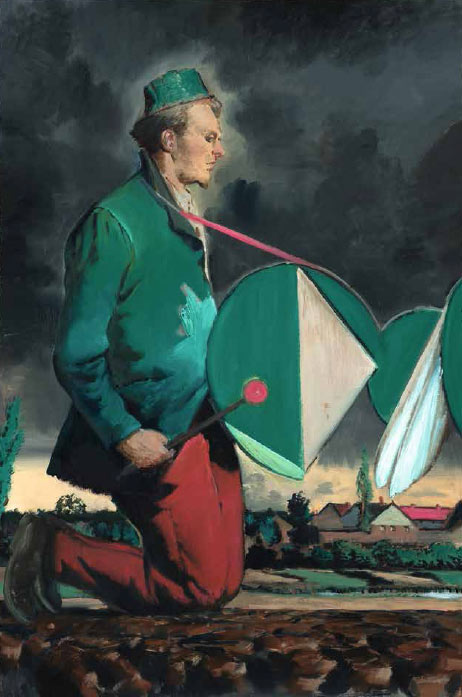
Gewitterfront
Neo Rauch
- 2016, olieverf op doek
150 x 100 cm
Gewitterfront gaat over onze wereld, nu, het toont de twijfel, het door de knieën gaan, de uitputting, het naderend gevaar en ook de wil op te krabbelen, om door te gaan. Het is een schilderij over deemoed, boetedoening en doorzettingsvermogen.
Met Gewitterfront lijkt Rauch zijn verbondenheid met (Oost-)Duitsland, zijn geboortegrond en bron van inspiratie, te spiegelen aan zijn twijfel over de (Europese) identiteit. Het doek met de geknielde tamboer in 19de-eeuws uniform refereert aan zowel Die Blechtrommel van Günter Grass als de iconische knieval van Willy Brandt in het getto van Warschau in 1970, als symbolische boetedoening voor de Jodenvervolging door de nazi’s. Daarmee levert Gewitterfront een complex en associatief beeld van onze geschiedenis en een kritische blik op de toekomst.
2016, oil on canvas
150 x 100 cm
Gewitterfront is about our world, the now! It lays bare the doubt, the knee buckling exhaustion and the encroaching danger, but also the will to struggle to your feet and carry on. It is a painting about humility, atonement and perseverance.
With Gewitterfront, Rauch appears to juxtapose his connection to (Eastern) Germany, his native land and source of inspiration, with his doubts about (European) identity. The canvas with its kneeling drummer in a 19th-century uniform refers to both Günter Grass's 'Die Blechtrommel' and Willy Brandt's iconic genuflection in Warsaw in 1970, as a symbolic gesture of penance for the Nazi persecution of the Jews. In this sense, Gewitterfront delivers a complex and associative image of our history and casts a critical eye on the future.
Neo Rauch
* 1960